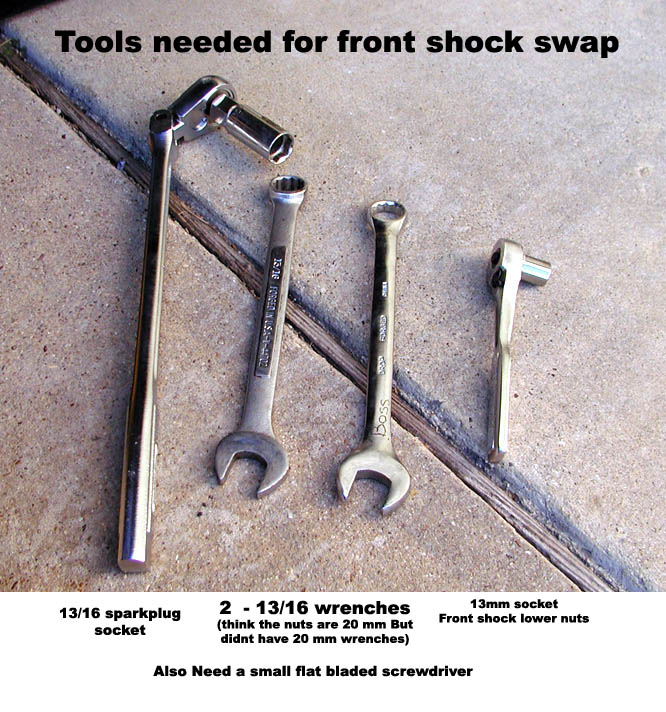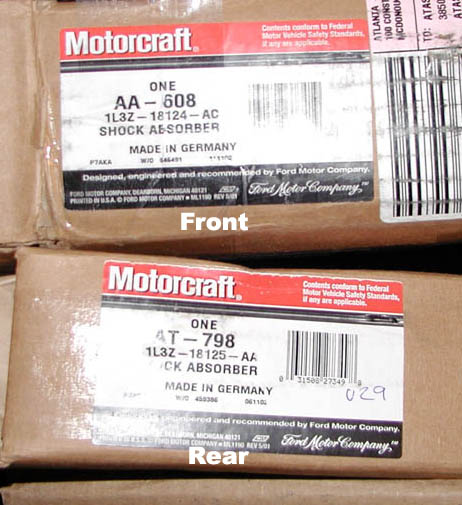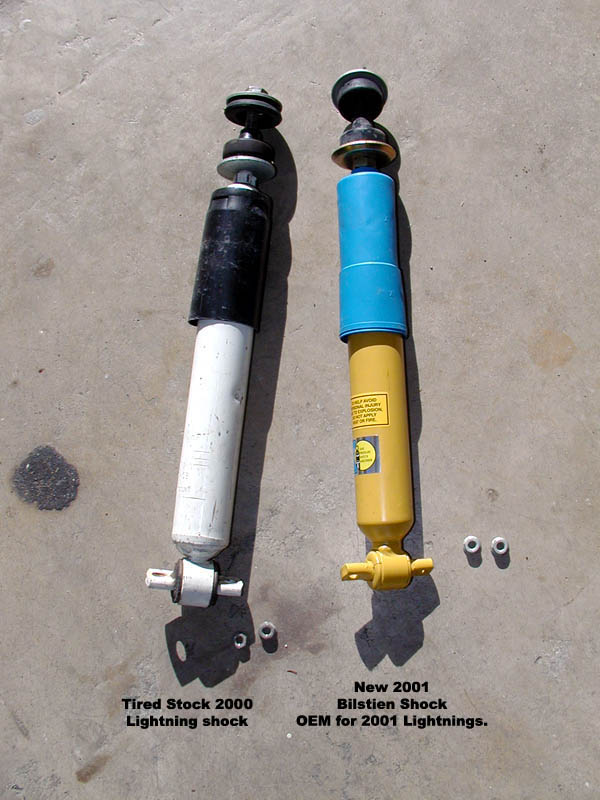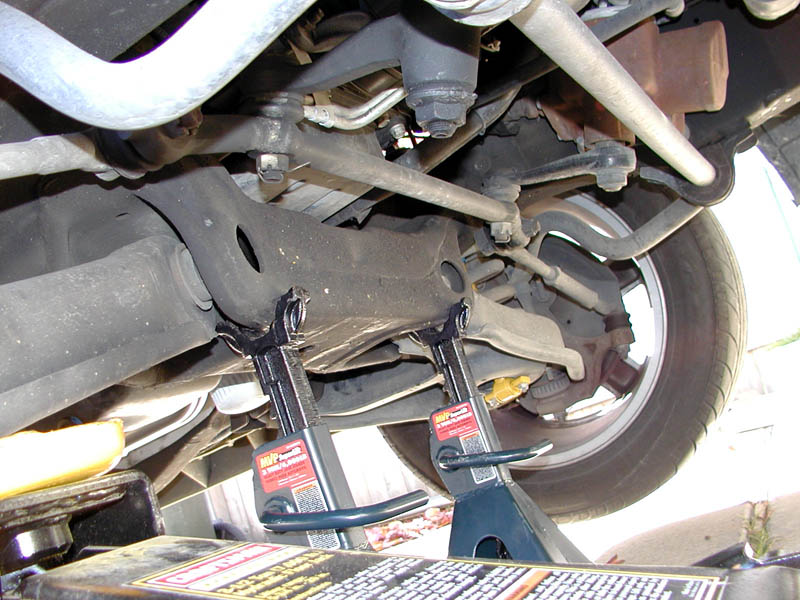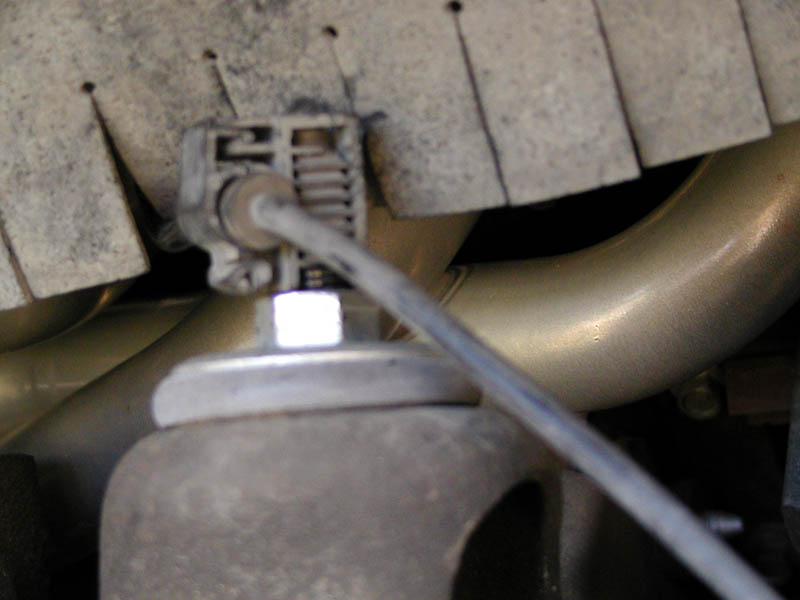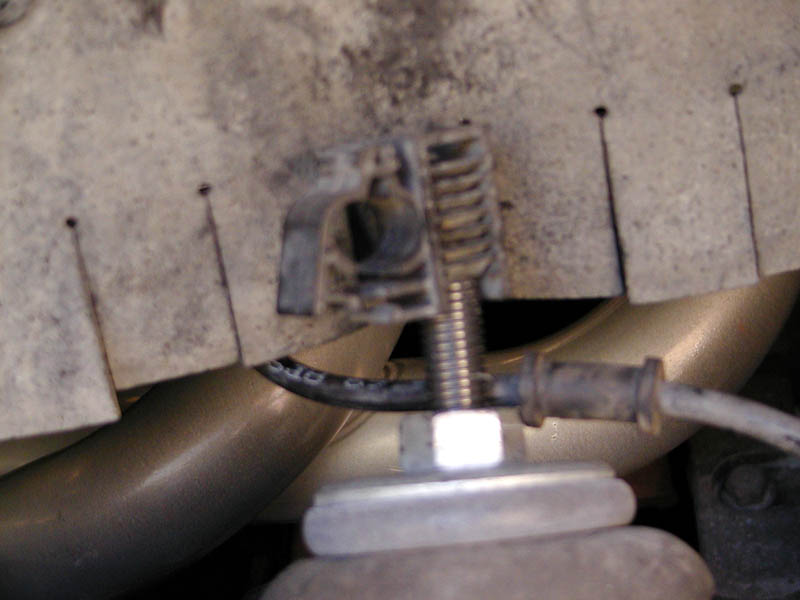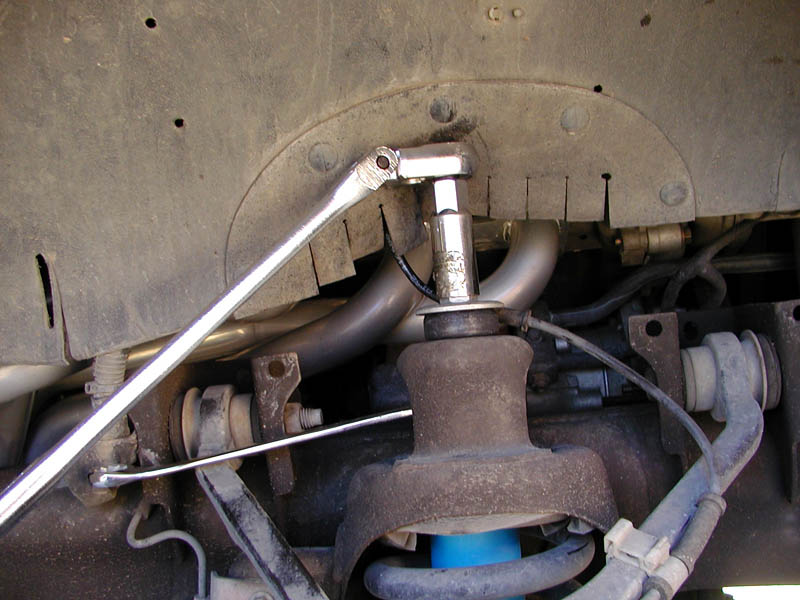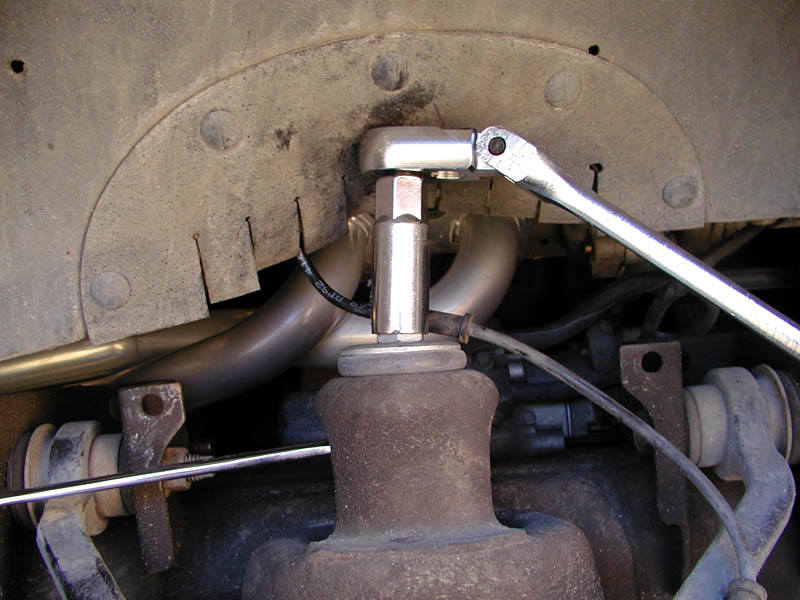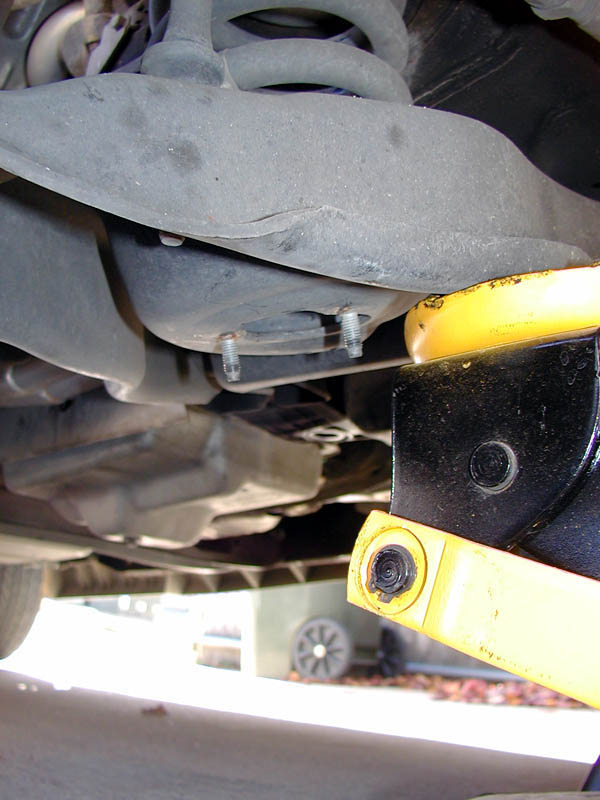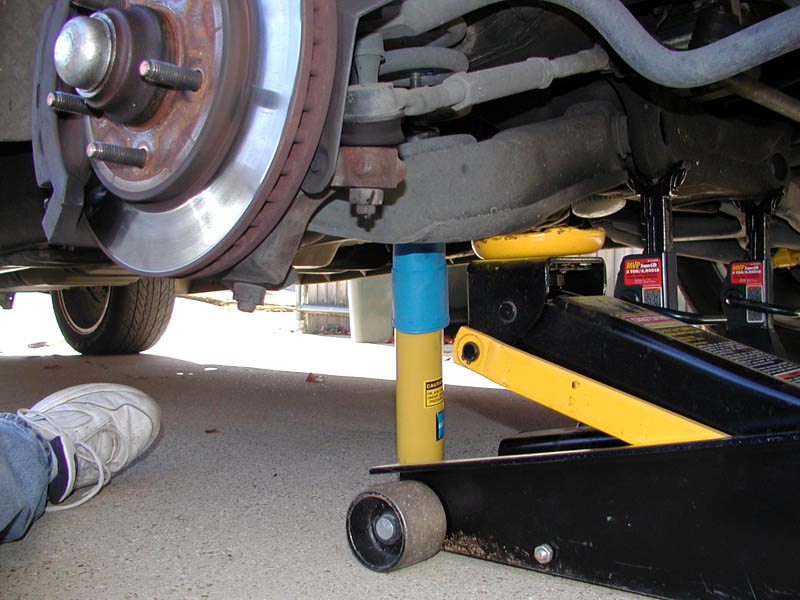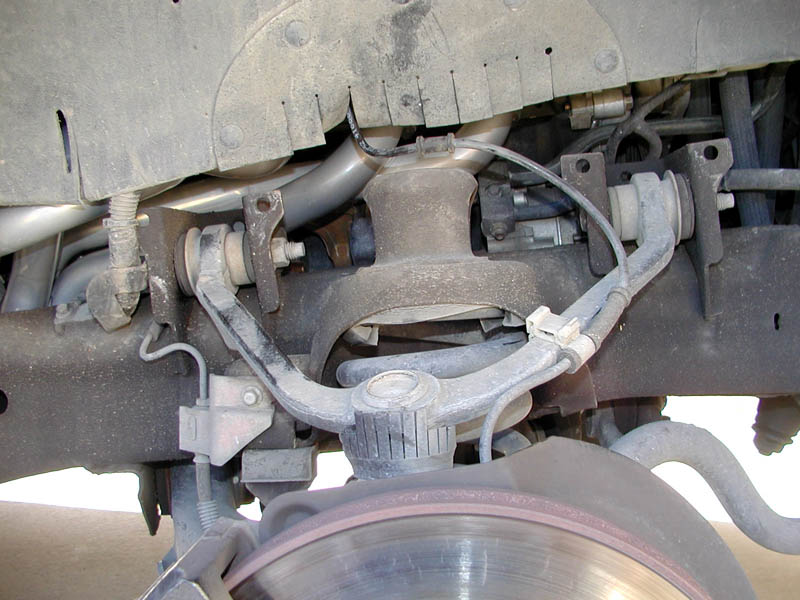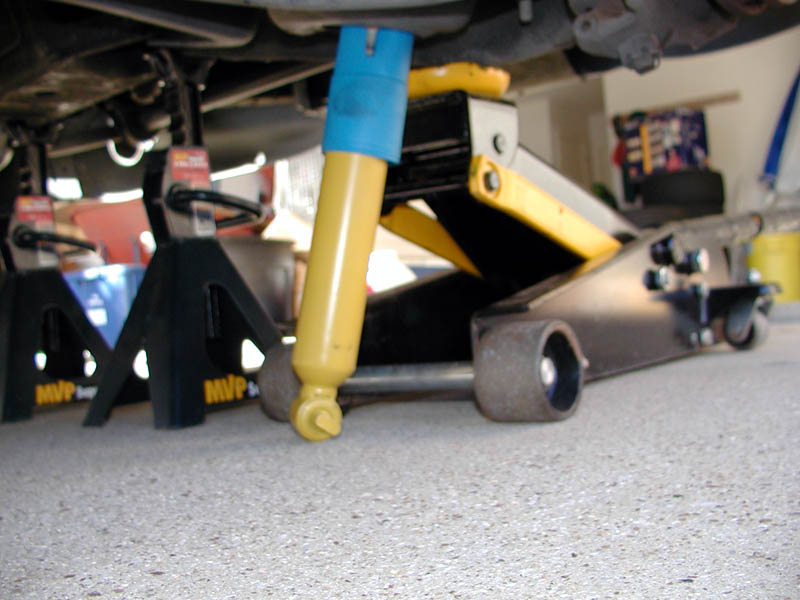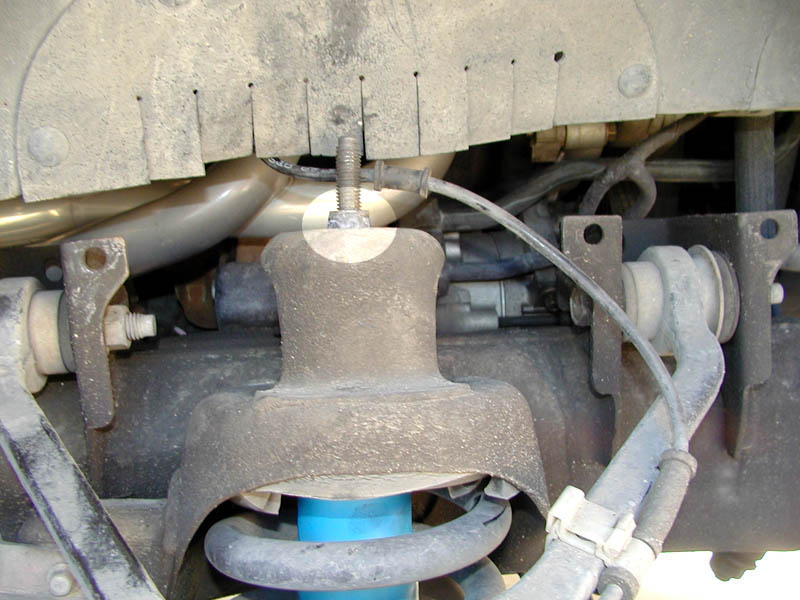| Bilstein Shock Install How to
One set of the shocks comes with new nuts and the others dont - You also need rear insulator nuts # F65Z-18197-BB
Carefully jack up the front end and support
the truck on jack stands that are rated to hold the weight of the truck.
Use a flat bladed screwdriver to remove line from this clip. then the clip unscrews off
13/16 sparkplug socket works well on the
pass side to get the top nut off Drivers side has a frame member that make
the top nut removal a little tougher,
Remove the 2 13mm bottom nuts and the shock comes out the bottom.
The new one goes back in the same way.
The 13mm nuts are to be tightened to 22-29 ftlbs
Once you get shock slid into place and
lower nuts on -
You want to be sure that the rubber
cone is up through the top of the tower before you install and tighten the
upper nut
Finally tighten the upper nut until
the shock is fully seated The book says 35-46 ft lbs The rear shocks are pretty straight forward - The drivers side top has a frame rail in the way and the shocks are compressed by a band. What I did was install the bottom of the shock and then cut the band and point the top into the hole - If you are good you can thread the needle as the shock expands... After 50,000 miles on the stock 2000
shocks the Bilisteins were a VAST improvement.
SVTLightnings.com recommends you
have professional help when servicing your vehicle.
|
